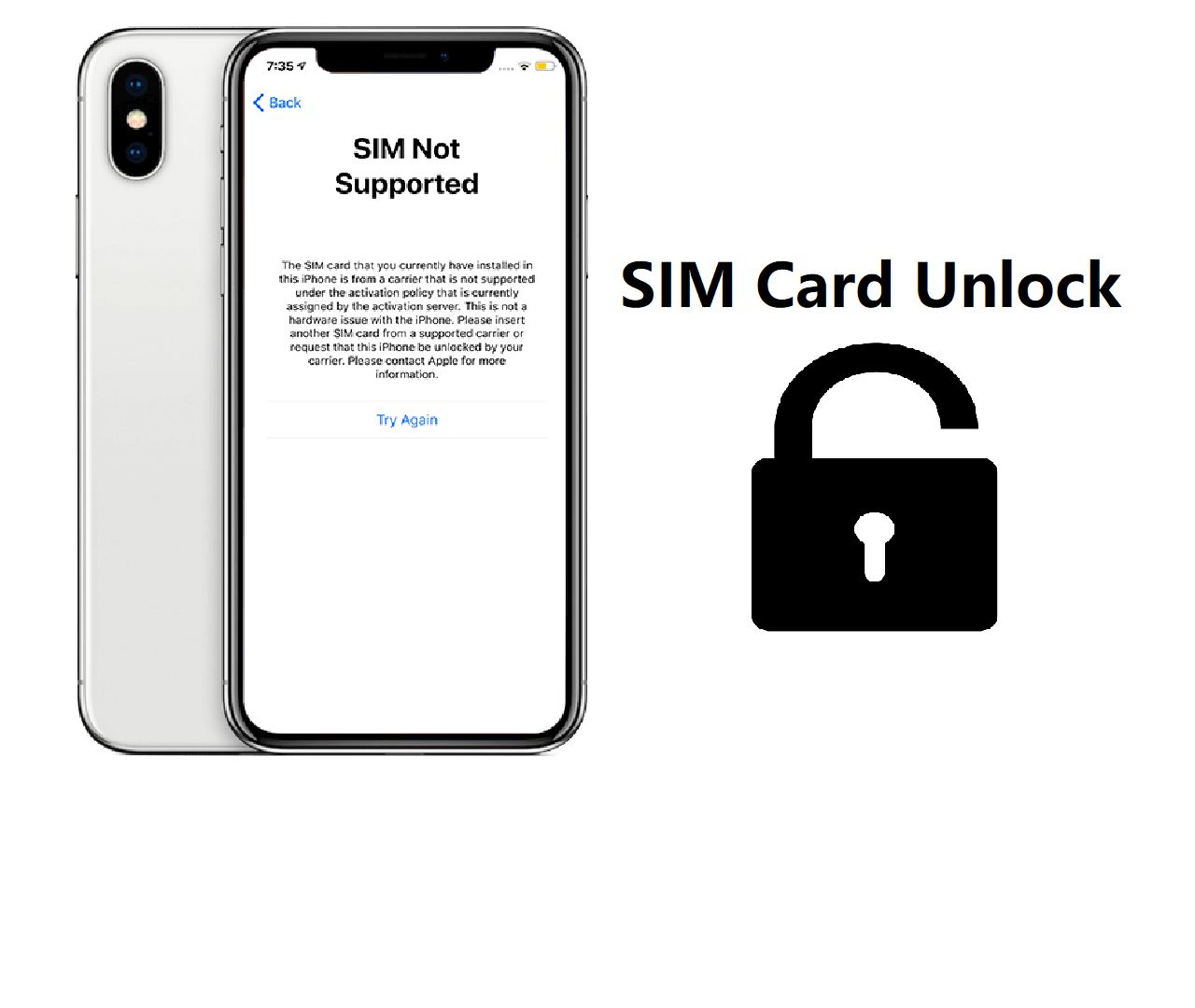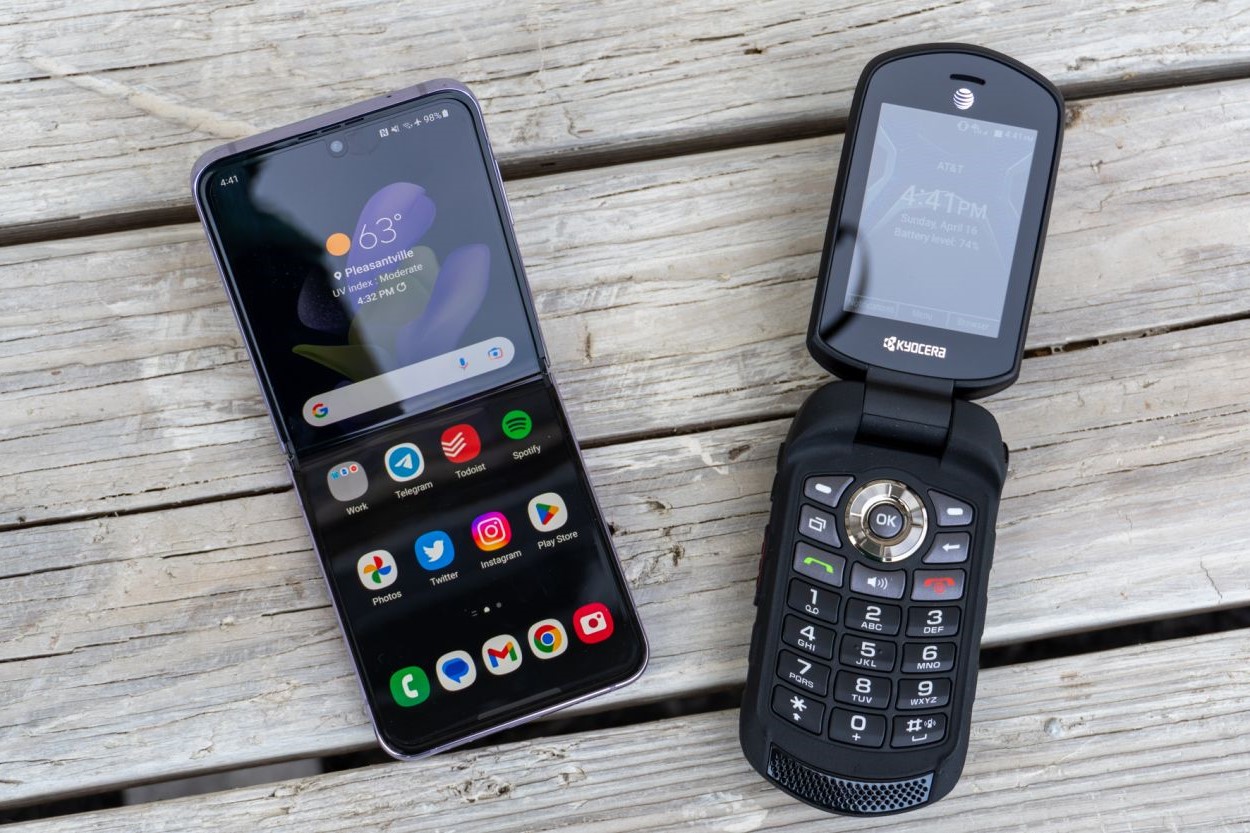Introduction
The SIM card, or Subscriber Identity Module, is a small, removable card that plays a crucial role in the functionality of a mobile device. It serves as the link between the device and the mobile network, enabling users to make calls, send texts, and access mobile data. The presence of a SIM card is fundamental to the seamless operation of a mobile phone, as it essentially defines the user's identity on the network.
Removing a SIM card from a phone can have a range of consequences, some of which may not be immediately apparent to the average user. While it may seem like a simple action, the implications of removing a SIM card extend beyond mere inconvenience. Understanding these consequences is essential for anyone who owns a mobile device, as it can impact communication, connectivity, security, and even the integrity of the device itself.
In this comprehensive guide, we will delve into the various repercussions of removing a SIM card from a phone. From the disruption of communication to potential security risks and the proper handling of the SIM card, we will explore the multifaceted impact of this seemingly innocuous action. By shedding light on these consequences, we aim to equip mobile device users with the knowledge needed to make informed decisions regarding their devices and ensure the smooth functioning of their communication tools.
Let's embark on this exploration to gain a deeper understanding of the implications of removing a SIM card from a mobile phone.
What is a SIM card and its function
A SIM card, or Subscriber Identity Module, is a small, portable smart card that serves as the linchpin of a mobile device's connectivity. It is a crucial component that facilitates the interaction between the device and the mobile network. The SIM card contains vital information that uniquely identifies the user and the mobile network subscription, including the International Mobile Subscriber Identity (IMSI) and the authentication key. These details are securely stored on the SIM card and are essential for the device to connect to the mobile network and access its services.
The primary function of a SIM card is to authenticate the user and the device on the mobile network, enabling them to make calls, send text messages, and access mobile data. When a user initiates a call or sends a message, the SIM card authenticates the user's identity and verifies their subscription to the mobile network, allowing the communication to take place. Additionally, the SIM card also stores contact information, text messages, and other user-specific data, making it a repository of personal and communication-related information.
Furthermore, SIM cards can also store network-specific settings, such as access point names (APNs) for mobile data connectivity. This feature enables seamless access to mobile data services, ensuring that the device can connect to the internet and access online content.
In essence, the SIM card acts as the unique identifier and authentication token for the user and the device on the mobile network. It not only facilitates communication but also plays a pivotal role in enabling mobile data access and personalized network settings.
Understanding the fundamental role of a SIM card in enabling mobile connectivity is essential for appreciating its significance within the realm of mobile devices. The next section will delve into the consequences of removing a SIM card from a mobile phone, shedding light on the multifaceted impact of this action.
Consequences of removing SIM card
Removing a SIM card from a mobile phone can have far-reaching consequences that extend beyond the immediate disruption of communication and connectivity. The ramifications of this action encompass various aspects of the device's functionality, as well as implications for security and privacy. Understanding these consequences is vital for mobile device users, as it sheds light on the potential impact of such a seemingly simple action.
One of the most immediate consequences of removing a SIM card is the loss of cellular connectivity. Without a functioning SIM card, the device is unable to connect to the mobile network, rendering it incapable of making or receiving calls and text messages. Additionally, mobile data access is also disrupted, impeding the user's ability to access the internet and utilize online services while on the go. This loss of connectivity can be particularly inconvenient and disruptive, especially for individuals who rely heavily on their mobile devices for communication and information access.
Furthermore, the removal of a SIM card can result in the loss of personalized network settings and configurations. As mentioned earlier, SIM cards store network-specific settings, including access point names (APNs) for mobile data connectivity. When the SIM card is removed, these settings may be lost, requiring the user to reconfigure the device to regain access to mobile data services. This can be a time-consuming and frustrating process, especially if the user is unfamiliar with the technical aspects of network settings.
In addition to the immediate impact on communication and connectivity, there are also potential security risks associated with removing a SIM card. SIM cards are designed to authenticate the user and the device on the mobile network, ensuring secure and authorized access to network services. When the SIM card is removed, this layer of authentication is effectively disabled, potentially exposing the device to unauthorized usage and security breaches. Furthermore, the personal and communication-related data stored on the SIM card, such as contact information and text messages, may become vulnerable if the SIM card is not handled and stored securely after removal.
Moreover, removing a SIM card without following the proper procedure can lead to potential damage to the device. SIM card slots are designed to accommodate the specific dimensions of a SIM card, and improper handling during removal or reinsertion can result in damage to the slot or the SIM card itself. This can compromise the integrity of the device and necessitate costly repairs or replacements.
Understanding these consequences underscores the significance of the SIM card in the seamless operation and security of a mobile device. The next section will delve into the impact of removing a SIM card on communication and connectivity, shedding light on the broader implications of this action.
Impact on communication and connectivity
The impact of removing a SIM card from a mobile phone reverberates significantly in the realm of communication and connectivity. The SIM card serves as the gateway to the mobile network, enabling users to make calls, send text messages, and access mobile data. When the SIM card is removed, the device is effectively cut off from the cellular network, resulting in a loss of essential communication capabilities.
Without a functioning SIM card, the device becomes unable to make or receive calls and text messages. This loss of basic communication functionality can be particularly disruptive, especially in situations where immediate connectivity is crucial. Whether it's for staying in touch with family and friends, receiving important updates from work, or accessing emergency services, the absence of a SIM card can impede the user's ability to communicate effectively using their mobile device.
In addition to voice calls and text messages, the removal of a SIM card also disrupts mobile data access. Without a functioning SIM card, the device loses the ability to connect to the internet using the mobile network. This can hinder the user's access to online services, email communication, social media, and other web-based applications while on the go. The impact of this loss of connectivity extends beyond mere convenience, as it can impede productivity and limit access to vital information and resources.
Moreover, the absence of a SIM card can also result in the loss of personalized network settings and configurations. SIM cards store network-specific settings, including access point names (APNs) for mobile data connectivity. When the SIM card is removed, these settings may be lost, requiring the user to reconfigure the device to regain access to mobile data services. This can be a cumbersome and time-consuming process, particularly for individuals who are not well-versed in the technical aspects of network settings.
The disruption of communication and connectivity caused by the removal of a SIM card underscores the pivotal role that the SIM card plays in enabling seamless mobile interactions. This impact extends beyond the immediate loss of connectivity, affecting the user's ability to stay connected, access information, and communicate effectively using their mobile device. Understanding these implications is crucial for mobile device users, as it highlights the significance of the SIM card in facilitating essential communication and connectivity services.
The removal of a SIM card from a mobile phone can have far-reaching consequences that extend beyond the immediate disruption of communication and connectivity. The ramifications of this action encompass various aspects of the device's functionality, as well as implications for security and privacy. Understanding these consequences is vital for mobile device users, as it sheds light on the potential impact of such a seemingly simple action.
Security risks and privacy concerns
When a SIM card is removed from a mobile phone, it introduces a range of security risks and privacy concerns that warrant careful consideration. The SIM card serves as a crucial component in authenticating the user and the device on the mobile network, ensuring secure and authorized access to network services. Its removal can potentially expose the device to unauthorized usage and security breaches, compromising the integrity of the user's communication and personal data.
One of the primary security risks associated with removing a SIM card is the disabling of the device's authentication mechanism. SIM cards are designed to verify the user's identity and authorize access to the mobile network, thereby preventing unauthorized usage of the device. When the SIM card is removed, this layer of authentication is effectively disabled, leaving the device vulnerable to unauthorized access and potential misuse. This can pose significant security threats, especially if the device falls into the wrong hands or is targeted for unauthorized use.
Furthermore, the personal and communication-related data stored on the SIM card, such as contact information, text messages, and network-specific settings, may become vulnerable if the SIM card is not handled and stored securely after removal. If the SIM card is not properly safeguarded, it could potentially be accessed by unauthorized individuals, leading to privacy breaches and the exposure of sensitive information. This underscores the importance of handling the SIM card with care and ensuring that it is stored in a secure location when not in use.
Additionally, the absence of a SIM card can impact the device's ability to remotely wipe or lock the device in the event of loss or theft. Many mobile devices offer remote security features that allow users to remotely lock or erase the device's data in case it is lost or stolen. However, these features often rely on the presence of a functioning SIM card to communicate with the mobile network and execute the remote commands. Without a SIM card, these remote security measures may be rendered ineffective, potentially compromising the security of the device and the data it contains.
Understanding these security risks and privacy concerns is essential for mobile device users, as it underscores the need to handle SIM cards with care and awareness of their role in securing the device and personal data. By recognizing the potential vulnerabilities introduced by the removal of a SIM card, users can take proactive measures to safeguard their devices and mitigate the associated security risks.
Potential damage to the device
The physical act of removing and reinserting a SIM card may seem straightforward, but it carries the potential for causing damage to the device if not executed with care and precision. The SIM card slot, designed to accommodate the specific dimensions of the SIM card, is a delicate component that can be susceptible to damage if mishandled during the removal or reinsertion process.
Improper handling of the SIM card itself can result in damage to both the card and the device. If excessive force is applied during the removal of the SIM card, it can lead to bending or warping of the card, rendering it unusable. Additionally, attempting to force the SIM card into the slot in the wrong orientation or with undue pressure can damage the delicate metal contacts on the card, impeding its functionality and potentially causing connectivity issues.
Moreover, the SIM card slot in the device is a finely engineered component that can be easily damaged if the SIM card is not inserted correctly. Attempting to force the SIM card into the slot at an incorrect angle or with excessive pressure can lead to damage to the slot, potentially causing misalignment or deformation. This can result in connectivity issues and may necessitate repairs to the device's hardware components.
In some cases, improper handling of the SIM card and the device during the removal or reinsertion process can lead to damage to other internal components. For instance, if the SIM card is forcefully inserted into the slot and encounters resistance, it may exert pressure on adjacent components, potentially causing damage to the device's internal circuitry or the SIM card slot itself.
Furthermore, dust and debris accumulation in the SIM card slot can also pose a risk of damage to the device. When the SIM card is removed, the slot is exposed, making it susceptible to the ingress of foreign particles. If dust or debris accumulates in the slot and the SIM card is reinserted without proper cleaning, it can lead to obstruction of the contacts and potential damage to the device's internal components.
Understanding the potential for damage to the device during the removal and reinsertion of a SIM card underscores the importance of handling the process with care and precision. By exercising caution and following the recommended procedures for SIM card handling, users can mitigate the risk of causing damage to their devices and ensure the continued integrity of their mobile phones.
How to safely remove and reinsert a SIM card
Safely removing and reinserting a SIM card is a simple yet crucial process that requires careful attention to detail to avoid potential damage to the device and the SIM card itself. By following the recommended steps, users can ensure the seamless handling of the SIM card, preserving the integrity of their mobile phones and maintaining uninterrupted connectivity.
Safely removing the SIM card:
-
Power off the device: Before attempting to remove the SIM card, it is essential to power off the device. This minimizes the risk of causing damage to the SIM card or the device's internal components during the removal process.
-
Locate the SIM card slot: The SIM card slot is typically located on the side of the device or underneath the back cover, depending on the device model. Users should consult the device's manual or manufacturer's guidelines to identify the precise location of the SIM card slot.
-
Use the SIM ejection tool or a paperclip: Most devices come with a SIM ejection tool, a small pin-like tool designed for ejecting the SIM card tray. If the SIM ejection tool is not available, a straightened paperclip can be used as an alternative. Insert the tool into the pinhole near the SIM card slot to release the SIM card tray.
-
Gently remove the SIM card: Once the SIM card tray is ejected, carefully remove the SIM card from the tray, ensuring that it is handled with care to prevent bending or damage to the card or its contacts.
Safely reinserting the SIM card:
-
Verify the orientation: Before reinserting the SIM card, it is important to verify the correct orientation. The SIM card has a notched corner that aligns with the tray, ensuring proper insertion.
-
Place the SIM card in the tray: Carefully place the SIM card into the tray, ensuring that it sits securely and aligns with the tray's contours. Avoid applying excessive force or inserting the SIM card at an incorrect angle to prevent damage to the card or the tray.
-
Gently insert the tray: Once the SIM card is securely positioned in the tray, gently slide the tray back into the device until it clicks into place. Ensure that the tray is inserted in the correct orientation to avoid misalignment or damage to the device's internal components.
By adhering to these guidelines, users can safely remove and reinsert a SIM card, minimizing the risk of damage to the device and ensuring the continued seamless operation of their mobile phones.
Conclusion
In conclusion, the act of removing a SIM card from a mobile phone carries a range of consequences that extend beyond the immediate disruption of communication and connectivity. From the loss of essential communication capabilities to potential security risks and the possibility of device damage, the implications of removing a SIM card underscore the pivotal role of this small yet crucial component in the seamless operation of a mobile device.
The impact of removing a SIM card encompasses various aspects of the device's functionality, emphasizing the significance of the SIM card in facilitating essential communication and connectivity services. The loss of cellular connectivity, disruption of mobile data access, and potential loss of personalized network settings highlight the far-reaching consequences of this seemingly simple action. Furthermore, the introduction of security risks and privacy concerns underscores the need to handle SIM cards with care and awareness of their role in securing the device and personal data.
Moreover, the potential for causing damage to the device during the removal and reinsertion of a SIM card emphasizes the importance of handling the process with caution and precision. By following the recommended procedures for safely removing and reinserting a SIM card, users can mitigate the risk of causing damage to their devices and ensure the continued integrity of their mobile phones.
Understanding these consequences and the recommended best practices for SIM card handling is essential for mobile device users, as it equips them with the knowledge needed to make informed decisions regarding their devices and ensure the smooth functioning of their communication tools. By recognizing the multifaceted impact of removing a SIM card, users can take proactive measures to safeguard their devices, mitigate security risks, and maintain uninterrupted connectivity.
In essence, the SIM card serves as the linchpin of a mobile device's connectivity, playing a fundamental role in facilitating essential communication and connectivity services. Its removal warrants careful consideration and adherence to recommended best practices to minimize the potential consequences and ensure the continued seamless operation of mobile phones.

























